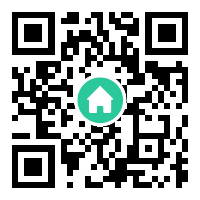Telegram web apps have emerged as a groundbreaking innovation in the realm of instant messaging and decentralized application development. By leveraging Telegram's vast user base of over 900 million monthly active users, these lightweight, browser-based applications enable developers to create interactive tools directly within the Telegram interface. Unlike traditional web apps, Telegram web apps integrate seamlessly with chat functionalities, offering a frictionless experience for both developers and end-users. This fusion of messaging and app ecosystems positions Telegram as a unique platform for building next-generation digital solutions.
The Architecture of Telegram Web Apps
At their core, Telegram web apps operate using a JavaScript-based framework that communicates with Telegram's native clients through a secure bridge. This architecture allows developers to harness Telegram's authentication system, payment processing, and cloud storage without requiring complex backend infrastructure. The platform's Mini Apps feature, launched in 2023, takes this further by enabling full-screen web experiences that maintain persistent connection with Telegram servers. This hybrid approach combines the flexibility of web technologies with native app performance, supporting real-time updates and offline functionality through service workers.
Key Features Driving Adoption
Three standout features make Telegram web apps particularly compelling for developers. First, the Telegram Login widget simplifies user authentication by utilizing existing Telegram accounts, eliminating password management hurdles. Second, the platform's Payment API supports 20+ payment providers globally, handling currency conversion and compliance automatically. Third, the Bot API integration enables developers to create conversational interfaces where web apps and chatbots work in tandem. These features collectively reduce development time by an estimated 40-60% compared to building standalone web applications.
Use Cases Transforming Industries
Practical applications of Telegram web apps span multiple sectors. E-commerce platforms like Shopify have implemented Telegram storefronts that allow customers to browse and purchase products without leaving their chat window. Educational institutions are creating interactive learning modules that combine video content with real-time Q&A bots. In healthcare, telemedicine providers use encrypted web apps for secure patient consultations. Perhaps most innovatively, decentralized finance (DeFi) projects leverage Telegram's web apps to create wallet-less cryptocurrency trading interfaces accessible through simple chat commands.
Security Considerations and Challenges
While Telegram web apps benefit from the platform's MTProto 2.0 encryption protocol, developers must address unique security challenges. The client-side nature of web apps increases vulnerability to XSS attacks, necessitating strict content security policies. Data persistence mechanisms require careful implementation to prevent unauthorized access to cached information. Additionally, Telegram's decentralized storage approach introduces complexities in maintaining GDPR compliance for user data. Recent updates to the Telegram Web Apps API (version 6.4) have introduced improved permission scopes and end-to-end encrypted storage options to mitigate these concerns.
Future Development and Ecosystem Growth
The Telegram web app ecosystem is poised for exponential growth, with the official Developer Portal reporting a 300% increase in registered projects since 2022. Upcoming features include enhanced AR capabilities through WebGL integration and AI-powered chatbot assistants that can dynamically modify web app interfaces. The platform's open nature encourages third-party tool development, with frameworks like grammY and telegraf.js emerging as popular choices for building complex applications. As Telegram continues to expand its TON blockchain integration, web apps are expected to play a crucial role in bridging decentralized technologies with mainstream user experiences.

Telegram web apps represent more than just a technical novelty – they signify a paradigm shift in how users interact with web-based services. By collapsing the traditional boundaries between communication platforms and application interfaces, Telegram has created an environment where productivity tools, entertainment services, and business solutions coexist within natural conversation flows. As the platform evolves, its web app capabilities will likely set new standards for contextual computing, making every chat window a potential gateway to rich, interactive experiences.












